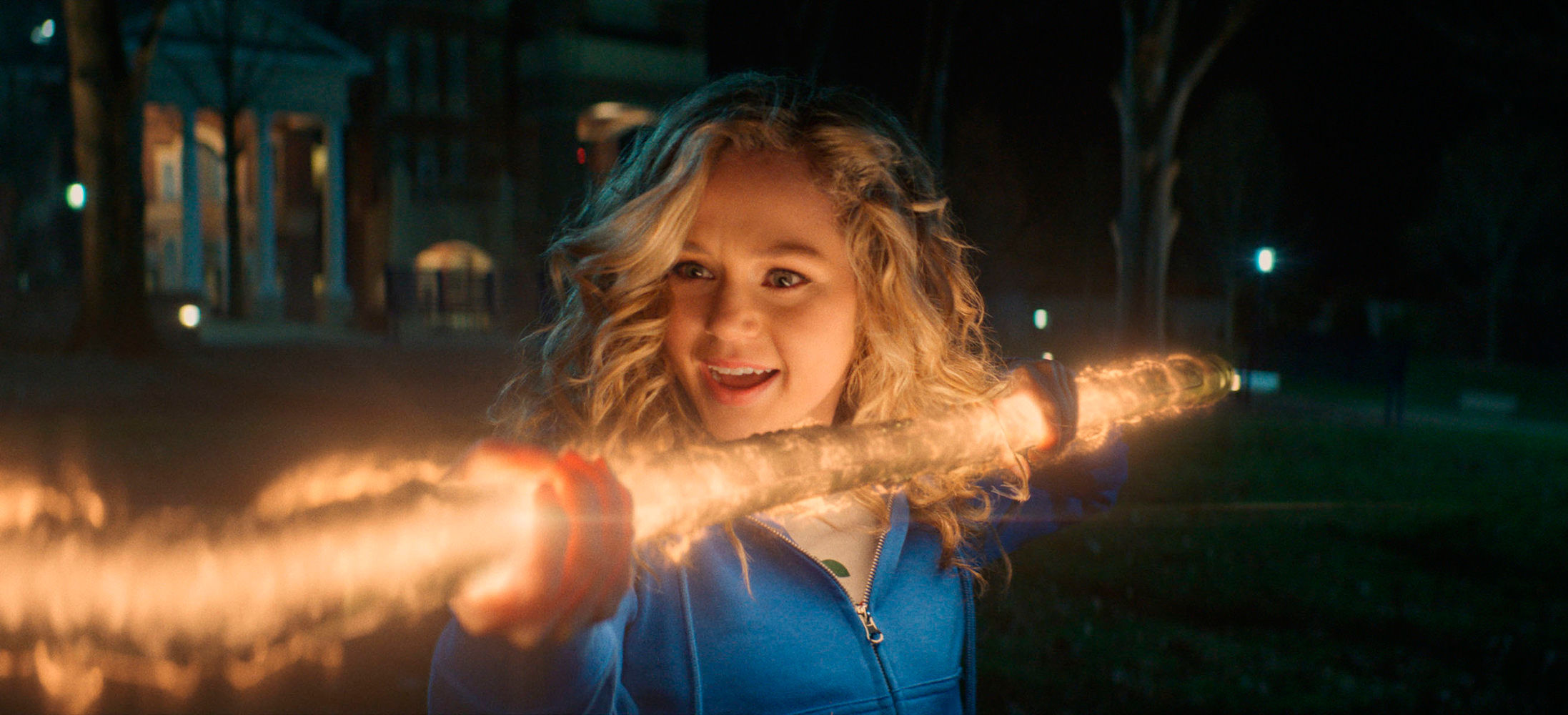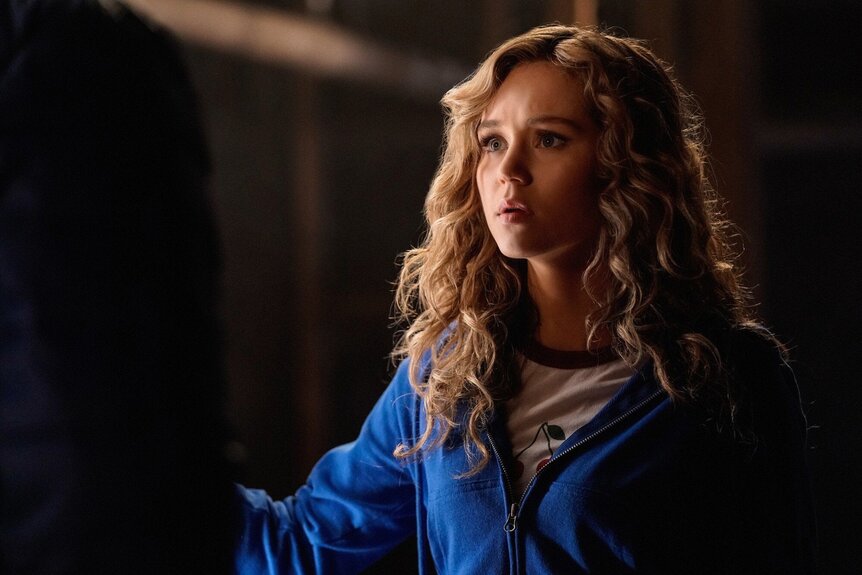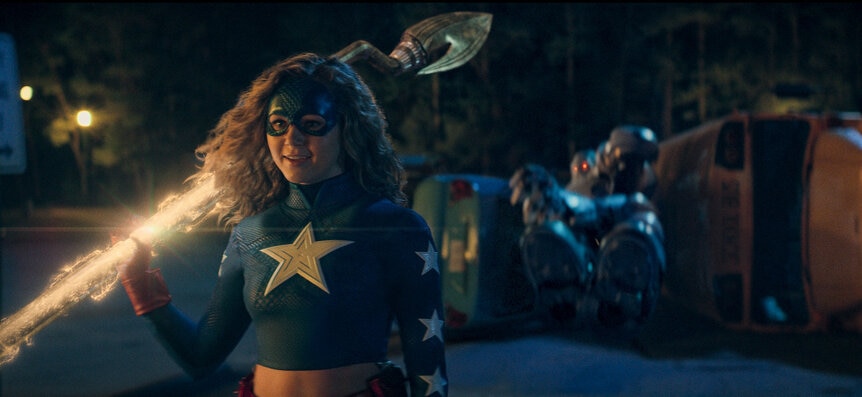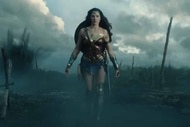Create a free profile to get unlimited access to exclusive videos, sweepstakes, and more!
Stargirl adds a brighter, younger, much-needed voice to the Arrowverse

One of the things Marvel’s late lamented television division did so well was use its small-screen platform to consciously tell different types of stories, the kind that would, in all likelihood, never be adapted as feature films. Teen-driven properties were one of them, and both Marvel’s Runaways and Cloak and Dagger still managed to tell important coming of age stories even as their younger heroes battled supervillains.
Unfortunately, The CW’s DC television universe has never really bothered to do the same, generally choosing to build its brand around solo legacy figures like the Green Arrow, the Flash, and Supergirl. And while those series have plenty to boast about, their stories tend to be about very adult journeys and feature few, if any, characters who might still get carded in order to buy beer.
Which is why the arrival of the new series Stargirl feels like such a breath of fresh air.
In fact, the premiere of Stargirl marks the beginning of a whole new era for the CW’s Arrowverse. Not only is it the universe’s first teen-focused series, it’s also the first show that’s being imported over to the network from the DC Universe streaming service, home to properties like Titans, Doom Patrol, and Swamp Thing.
As that oddball lineup might indicate, DC Universe is deeply invested in telling stories that aren’t quite considered “mainstream.” Stargirl, after all, isn’t Wonder Woman, and the Justice Society of America isn’t the Justice League. The show is built on a deep foundation of classic Golden Age heroes and lore that casual Arrowverse fans may not recognize and embraces a warm, kitschy aesthetic that stands out in this often overly dark comic universe. Yet, Stargirl's attitude is one of complete fearlessness from its opening scenes. It knows exactly what kind of show it wants to be, and expects its audiences to keep up. It also clearly sees the value in telling a story DC fans haven’t seen on screen before.
As a result, the series is like nothing else in The CW’s superhero lineup at present, in either tone or content. Stargirl follows the coming-of-age saga of a high school teen named Courtney Whitmore, whose family moves her from Los Angeles to the picturesquely quaint small town of Blue Valley, Nebraska. There, she discovers the new stepfather whose presence she’s been resisting is actually a former member of the Justice Society of America, and the absentee father she never knew just may have been the superhero known as Starman. (At least, if the semi-sentient light-up staff he used to own that’s now following her around is any indication.)
But in addition to figuring out what it means to be a hero, Courtney also has to face the very common teenage problems of making friends in a new place, confronting bullies, and adjusting to a new and untested family dynamic, complete with a weirdo stepbrother and mandatory family meals.
On her first day at school, Courtney finds herself banished to the “losers” table in the cafeteria, where she meets Yolanda and Beth, two other social outcasts who are regularly mocked and harassed by their fellow classmates. That these girls will eventually become her friends — and partners in her superhero adventures — is obvious from the start, but the relationships between them all grow organically.
Courtney’s connection with Yolanda stems from the fact that she dislikes the way other students treat her, and her initial overtures of friendship have little to do with her other, shall we say, extracurricular activities. The core group of teens at Stargirl’s center may not know each other well yet, but it’s already apparent that this story will be as much about their relationships with one another as their inevitable face-offs with bad guys. (Or maybe their classmates' parents, since some of them appear to be the literal offspring of the villainous Injustice Society of America.)
Stargirl is hardly the first story to use superpowers or other preternatural gifts as a metaphor for growing up. Buffy the Vampire Slayer was depicting the (literally) hellish challenges of high school back in the 1990s, and Courtney is one in a long line of women who’ve followed in Buffy's quippy, butt-kicking footsteps; she faces down school bullies as often as she does supervillains, speaks up for those she sees being harassed, and struggles with things like homework and Parents Night as much as she does the Cosmic Staff.
But while these tropes are certainly familiar to those of us who are fans of this genre, they’re stories that have largely yet to be told within the context of the Arrowverse. Only one of the CW’s six properties has a younger hero (Black Lightning’s Jennifer Pierce), and most never even feature teen characters in any significant capacity. (Though I’m hopeful for more of Batwoman’s recurring teen hacker, Parker.) Arrow and The Flash have given us glimpses of a future second generation of heroes, but both Mia Smoak-Queen and Nora West-Allen are young adults when we meet them, thanks to complicated plots involving time travel and flashforwards.
Furthermore, the CW’s major heroes all came to their callings fairly late in life, during the point at which hiding a secret identity was perhaps more of a burden than a lark. Several of them are initially motivated by revenge (Oliver Queen); others created by circumstances beyond their control (Barry Allen and every person in Central City affected by the particle accelerator explosion). Some choose to use their abilities to help others (Kara Zor-El, Kate Kane). And still more do so as part of a quest for personal redemption (Sara Lance, Black Siren). But none of those journeys generally involve much of what you might call fun.
Its youthful setting also allows Stargirl to unabashedly embrace the joy of being a superhero. Sure, shows like The Flash and Supergirl feature optimistic heroes who look for the best in others and give great pep talks when their friends are down. But Courtney reminds us how literally amazing this experience is — especially for someone who can’t even drive yet.
The series’ first few episodes ably display the pure excitement Courtney feels in discovering her powers, making her own costume, and testing the limits of what she and her magical staff can do. (There are montages! With peppy pop music! It’s wonderful!) Too often, superhero tales seem to focus on what a burden it is to be a hero: How difficult it is to hide one’s true self from those around you. What it really costs to save the world. The dangers one’s secret identity poses to family and friends.
Here, however, Courtney is all smiles, thrilled at the chance to connect to the legacy of the man she assumes is her father and proud of the fighting moves she can now execute. Her secret identity has brought her closer to the family member she knew least — her stepfather — and is giving her a sense of purpose in a town she didn’t want to live in. Perhaps it’s because Courtney is young, and has yet to face the difficult choices and painful compromises of someone who’s been a hero as long as, say, Barry Allen or Oliver Queen have. But, for her, being a hero feels like a gift, something that’s fun and wondrous and terrifying, that will absolutely turn out to be the best thing that’s ever happened to her. (And probably to Blue Valley, too.)
Courtney is a young girl, attempting to navigate her way through a challenging time in her life. But she’s also a joyous, buoyant reminder of the reason we all watch and love superheroes in the first place, and it’s not because of grimdark twists and personal pathos. There’s a place for those stories, of course, but Stargirl proves there’s room for another path, as well – a youthful, sunny reminder that saving the world doesn’t have to be a slog. Sometimes you can even fit it in around math class.



























